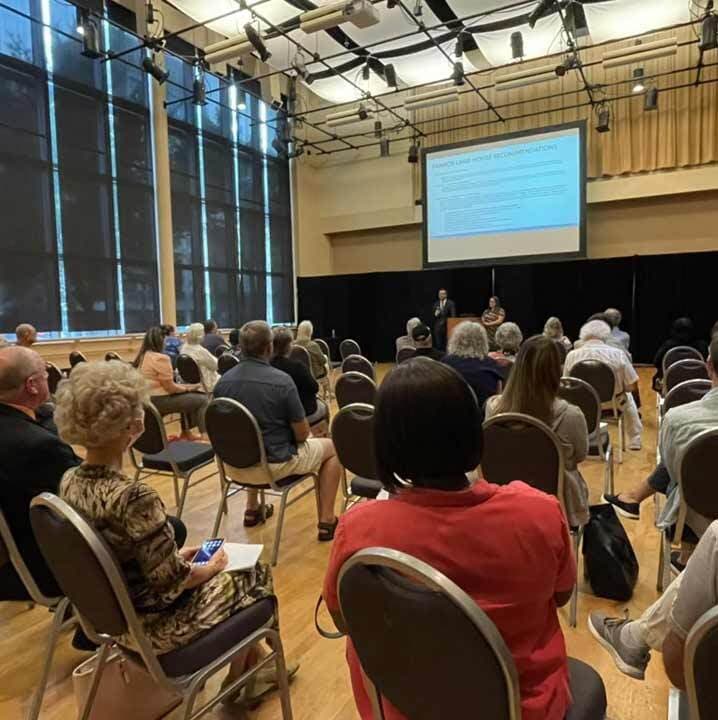Interpretive Plan
Paving the Path Forward - Virginia Beach Historic Houses Interpretive Plan
The Virginia Beach History Museums (VBHM) hired History Associates, Inc. (HAI) to research and develop a new, dynamic interpretive plan to improve the sites’ visibility and interpretive materials.
Partnering with the community, the project team worked to determine what was achievable in this path for the future, provide recommendations on opportunities to enhance the visitors’ experience, create meaningful education and community programming, and what options should be prioritized, based on public and stakeholder feedback.
Interpretive Plan Explained
- An interpretative plan is a foundational document that helps institutions, like historic homes, tell their stories, interpret their resources, and achieve their overall mission.
- A certified interpretive planner works with clients to develop a comprehensive strategy for conveying key messages to target audiences in the most effective way, while respecting and preserving their unique heritage.
- A certified interpretative planner guides institutions through a decision-making process to shape their message, identify their goals and objectives, and plan their interpretive programs.
- Interpretive planning is a collaborative, goal-driven process.
Interpretive themes are the key messages visitors should understand after visiting the sites. A good theme statement should reflect a site’s resources and values; connect tangibles and intangibles; and answer the question: “so what?” Themes should reflect what makes each house unique, the key stories or possible messages at each house, and the takeaways they want visitors to have after visiting.
Theme 1: Community Connection
The Thoroughgood, Lynnhaven, and Francis Land houses are intricately connected to the story of the local community in all its complexity and diversity – from the original Indigenous settlement to today.
Theme 2: Diverse Stories
The people who lived and worked in these three houses—men and women, adults and children, free and enslaved—shaped these buildings’ legacies. The history of these houses cannot be fully understood without knowing their stories.
Theme 3: Daily Life
Daily life at these three houses reflected the social and economic situations of the inhabitants and workers and provide key insights into the past.
Theme 4: Architecture
The Thoroughgood, Lynnhaven, and Francis Land houses highlight the evolving architectural styles of the 18th and early 19th centuries, providing insights into changing tastes, technologies, labor practices, and materials.
Theme 5: Rise of a Country
The stories of these homes, and those who lived and worked here, are intertwined with the creation of the United States and the successes and challenges of the country’s birth and later history.
Theme 6: Environment
The houses provide insight into the long history of the region and its inhabitants’ efforts to manage, control, and survive their environment—from the Chesapeake and Nansemond presence to modern sustainability efforts by the city and its partners.

The Interpretive Planning Process
Historic Homes Interpretive Plan public meeting at the Sandler Center for the Performing Arts in Sep. 2022
The process began in February 2020, when VBHM partnered with key stakeholders to draft a Request for Proposals. HAI won the contract, and initial plans were made for work to begin the following month.
However, when COVID-19 pandemic safety restrictions began the next month, the initial site visit and workshops were delayed. In the meantime, the project team researched each house and conducted benchmarking with similar sites.
Once restrictions eased, HAI interpretive planners traveled to each of the houses in May 2021 to learn more about tours, programs, and current restoration work. The team also led a two-day workshop with staff and stakeholders to identify key goals, themes, objectives, and audiences.
After these meetings, HAI and City of Virginia Beach staff began broader public outreach in the summer of 2021 via a public meeting and community survey. Drawing on this feedback, in July 2021, HAI conducted additional stakeholder conversations and returned to Virginia Beach to meet with staff about recommendations for the plan.
Starting that fall, and through spring 2022, HAI wrote the first draft of the plan, and submitted it to City of Virginia Beach staff. The team responded to comments and made requested revisions. The revised document was then presented to the public, with the public’s feedback incorporated into the final document.
Stay in the Know!
Receive Plan Updates
Interested in receiving plan updates? Subscribe to our newsletter.
Subscribe Today




